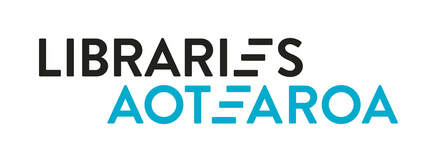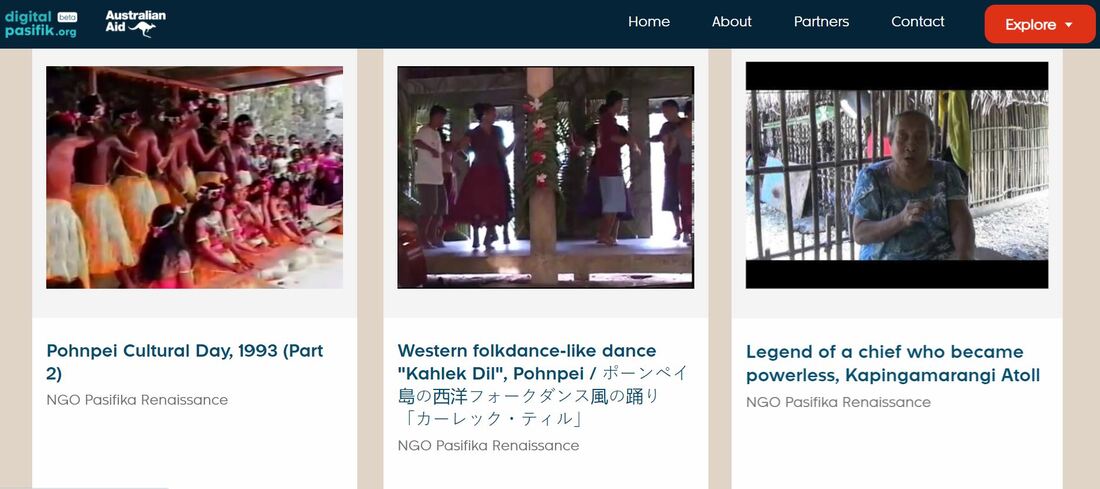Collaboration Brings Results for Pacific Cultural Heritage
The Pacific Virtual Museum (PVM) pilot project has launched www.digitalpasifik.org. This new website has been created through a collaboration by, with and for Pacific peoples; educators; learners; and researchers.
The website presents collections of Pacific heritage and cultural items that are held in a range of galleries, museums and university repositories. These are initially from New Zealand and Australia, but there is a commitment to work with Pacific-based organisations and community groups and to present their digitised content. The team will also be engaging with repositories in Europe and America to share their digitised collections with those in the Pacific. The site will provide a platform for holders and creators of cultural content and knowledge in the Pacific Islands to share it with a wider audience.
The website presents collections of Pacific heritage and cultural items that are held in a range of galleries, museums and university repositories. These are initially from New Zealand and Australia, but there is a commitment to work with Pacific-based organisations and community groups and to present their digitised content. The team will also be engaging with repositories in Europe and America to share their digitised collections with those in the Pacific. The site will provide a platform for holders and creators of cultural content and knowledge in the Pacific Islands to share it with a wider audience.
“The design of the site allows Pacific Island peoples to see and explore items that are mostly held far away from their islands. We know that people of the Pacific may not be aware these items exist, and so it’s exciting to have developed a site that makes it easy and accessible for them to find and learn about these,” says Tim Kong, Programme Manager of the Pacific Virtual Museum pilot.
Funded by Australia’s Department of Foreign Affairs and Trade, Digital Pasifik is the result of a unique partnership between the National Library of New Zealand and National Library of Australia. Representatives from libraries, universities, archives and museums from around and within the Pacific, as well as NGOs and those working with community groups, made up the initial co-design group.
Funded by Australia’s Department of Foreign Affairs and Trade, Digital Pasifik is the result of a unique partnership between the National Library of New Zealand and National Library of Australia. Representatives from libraries, universities, archives and museums from around and within the Pacific, as well as NGOs and those working with community groups, made up the initial co-design group.
“We hope that the site will help Pacific island people of different generations connect and better understand the many unique cultures that make up the Pacific region,” says Tim.
When asked what the highlight of the project has been so far Tim says, “It’s been a privilege, to learn from so many people, to be humbled by the circumstances that they work within, to see how they light up when we describe the aims and intent of the pilot project, and how we are seeking to make it work for them. Ultimately, for this pilot project to be enduring, it has to matter to those in the islands, and to lift and enable them as they seek to tell their stories and define their place in the Pacific.”
Helen Heath caught up with Tim Kong and asked him a few questions.
When asked what the highlight of the project has been so far Tim says, “It’s been a privilege, to learn from so many people, to be humbled by the circumstances that they work within, to see how they light up when we describe the aims and intent of the pilot project, and how we are seeking to make it work for them. Ultimately, for this pilot project to be enduring, it has to matter to those in the islands, and to lift and enable them as they seek to tell their stories and define their place in the Pacific.”
Helen Heath caught up with Tim Kong and asked him a few questions.
How many Pacific heritage items are you providing access to with the pilot phase?
The initial brief of the pilot project was to launch the site with 15,000 images. We’re proud to say that digitalpasifik.org has launched with over 40,000 items, including images; objects; video; audio; text; and maps.
The initial brief of the pilot project was to launch the site with 15,000 images. We’re proud to say that digitalpasifik.org has launched with over 40,000 items, including images; objects; video; audio; text; and maps.
Where have you sourced the content from?
Our site will initially begin with records of cultural heritage sourced from Alexander Turnbull Library, Auckland Museum, Te Papa and Trove/National Library of Australia. We’re also gathering video content from NGO Pasifika Renaissance, who are using Youtube and Facebook to promote oral histories and traditional stories from Micronesia. The intention is to bring onboard more content partners throughout the pilot phase and to share more items and records from those partners.
Can you tell us about other partner organisations contributing to the PVM?
As well as the four institutes named above, we have also been engaging with the National Archives of Fiji, Australian National University, Université de la Polynésie Française, University of Hawai’i, University of California San Diego, University of Guam, representatives from PIALA, museums, libraries and archives in Papua New Guinea, Kiribati, the Cook Islands, and other institutions in New Zealand, such as the Hocken Library.
Our site will initially begin with records of cultural heritage sourced from Alexander Turnbull Library, Auckland Museum, Te Papa and Trove/National Library of Australia. We’re also gathering video content from NGO Pasifika Renaissance, who are using Youtube and Facebook to promote oral histories and traditional stories from Micronesia. The intention is to bring onboard more content partners throughout the pilot phase and to share more items and records from those partners.
Can you tell us about other partner organisations contributing to the PVM?
As well as the four institutes named above, we have also been engaging with the National Archives of Fiji, Australian National University, Université de la Polynésie Française, University of Hawai’i, University of California San Diego, University of Guam, representatives from PIALA, museums, libraries and archives in Papua New Guinea, Kiribati, the Cook Islands, and other institutions in New Zealand, such as the Hocken Library.
We love the sound of the co-design approach, how did it work – practically – and who would you like to work with in the future?
As a result of COVID, our co-design work has been critical, and the opportunity to bring more voices into our conversations and thinking has been great. Our core co-design group gets weekly views of the design and build of the site, and provides feedback, while we are engaging with a wider group to discuss some of the bigger conversations around cultural heritage, and how to support the GLAM sector across the Pacific.
What is the thinking behind the co-design approach?
The key aspect of the co-design approach has been to focus on delivery but to be open to hearing from the group and rapidly making changes based on the feedback from the group, and particularly those in the Pacific. At the heart of this pilot, is a conversation about supporting Pacific Island peoples to connect with items of cultural heritage, that they don’t know exist, and to support them in redefining and shaping their own stories as a result of seeing and being able to engage with this cultural heritage.
This is in practical ways – we are designing the site to be mobile-first and data-light because the reality is that network access is restricted and can be costly across the Pacific. We are also open in how we are building the digtalpasifik.org schema for managing the data, inviting institutes to see how we are looking to present the data they have shared with us. We are regularly presenting designs to the group and based on feedback, rejecting or enhancing what we’ve done.
As a result of COVID, our co-design work has been critical, and the opportunity to bring more voices into our conversations and thinking has been great. Our core co-design group gets weekly views of the design and build of the site, and provides feedback, while we are engaging with a wider group to discuss some of the bigger conversations around cultural heritage, and how to support the GLAM sector across the Pacific.
What is the thinking behind the co-design approach?
The key aspect of the co-design approach has been to focus on delivery but to be open to hearing from the group and rapidly making changes based on the feedback from the group, and particularly those in the Pacific. At the heart of this pilot, is a conversation about supporting Pacific Island peoples to connect with items of cultural heritage, that they don’t know exist, and to support them in redefining and shaping their own stories as a result of seeing and being able to engage with this cultural heritage.
This is in practical ways – we are designing the site to be mobile-first and data-light because the reality is that network access is restricted and can be costly across the Pacific. We are also open in how we are building the digtalpasifik.org schema for managing the data, inviting institutes to see how we are looking to present the data they have shared with us. We are regularly presenting designs to the group and based on feedback, rejecting or enhancing what we’ve done.
What has been the greatest challenge of getting the pilot programme going so far?
The impact of COVID and the lockdown conditions were initially discouraging. But we made space for people to re-engage on their terms with our project, using tools to host an ongoing conversation. There has been the challenge of time zones and getting people to know and trust us via remote only ways, all while moving ahead with our design and build process. Probably the biggest challenge has been the sheer scale of the Pacific and trying to constantly honour every culture that the ocean encompasses. It is a wonderful challenge to have though.
Thanks so much for talking with Library Life Tim!
The impact of COVID and the lockdown conditions were initially discouraging. But we made space for people to re-engage on their terms with our project, using tools to host an ongoing conversation. There has been the challenge of time zones and getting people to know and trust us via remote only ways, all while moving ahead with our design and build process. Probably the biggest challenge has been the sheer scale of the Pacific and trying to constantly honour every culture that the ocean encompasses. It is a wonderful challenge to have though.
Thanks so much for talking with Library Life Tim!
The Pacific Virtual Museum pilot project is funded until February 2022 and within that time the digitalpasifik.org site features will be further developed, content partners will be added, and the co-design group will continue to guide the delivery. A key part of the project will be to explore ways of sustainably implementing and supporting the pilot project aims beyond this date.
The pilot project and digitalpasifik.org is supported by the Australian Government and implemented by Te Puna Mātauranga o Aotearoa National Library of New Zealand, in collaboration with the National Library of Australia.
Hear more on Radio New Zealand National >
Hear more on ABC >
The pilot project and digitalpasifik.org is supported by the Australian Government and implemented by Te Puna Mātauranga o Aotearoa National Library of New Zealand, in collaboration with the National Library of Australia.
Hear more on Radio New Zealand National >
Hear more on ABC >



